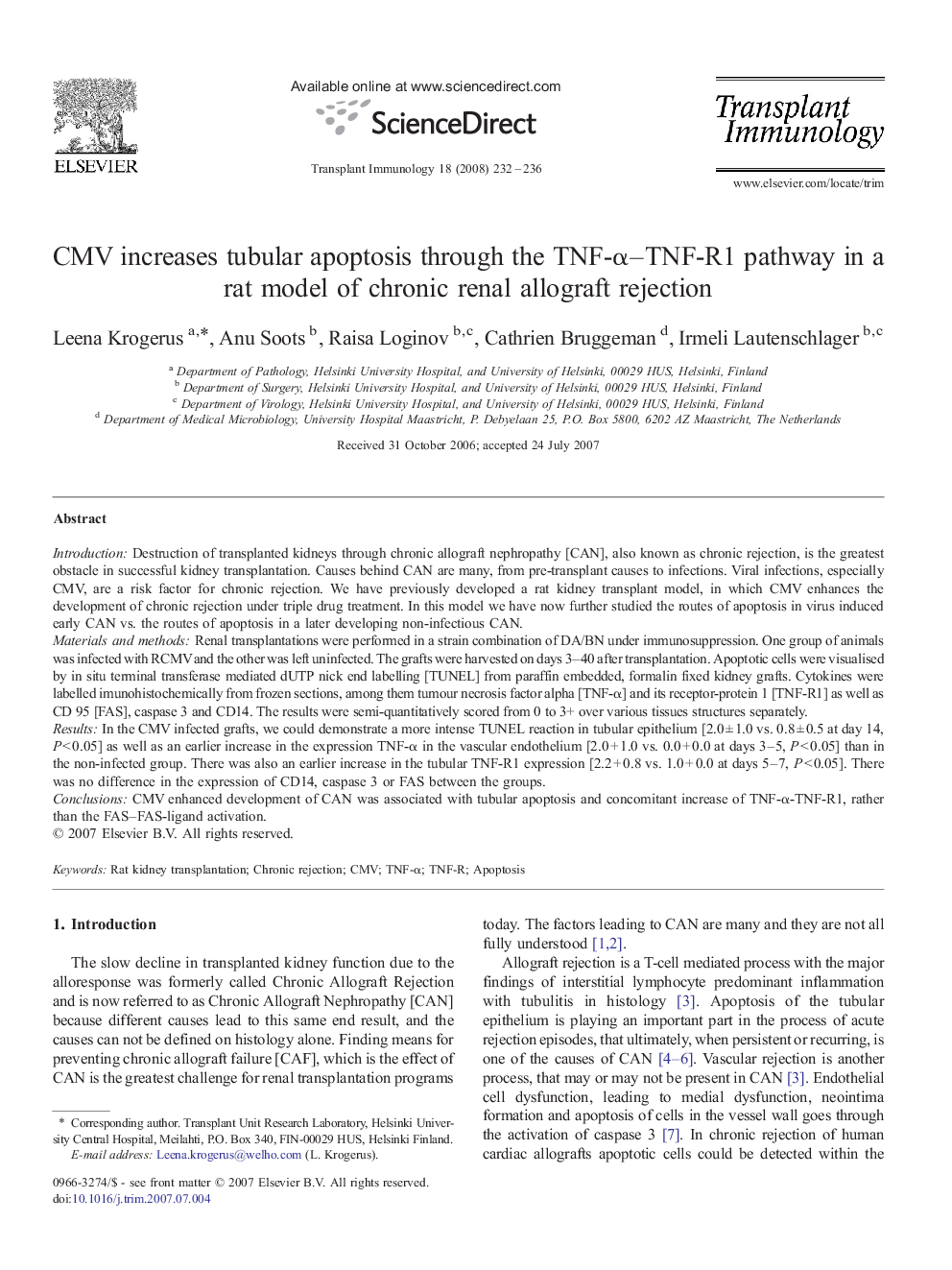| Article ID | Journal | Published Year | Pages | File Type |
|---|---|---|---|---|
| 3392406 | Transplant Immunology | 2008 | 5 Pages |
IntroductionDestruction of transplanted kidneys through chronic allograft nephropathy [CAN], also known as chronic rejection, is the greatest obstacle in successful kidney transplantation. Causes behind CAN are many, from pre-transplant causes to infections. Viral infections, especially CMV, are a risk factor for chronic rejection. We have previously developed a rat kidney transplant model, in which CMV enhances the development of chronic rejection under triple drug treatment. In this model we have now further studied the routes of apoptosis in virus induced early CAN vs. the routes of apoptosis in a later developing non-infectious CAN.Materials and methodsRenal transplantations were performed in a strain combination of DA/BN under immunosuppression. One group of animals was infected with RCMV and the other was left uninfected. The grafts were harvested on days 3–40 after transplantation. Apoptotic cells were visualised by in situ terminal transferase mediated dUTP nick end labelling [TUNEL] from paraffin embedded, formalin fixed kidney grafts. Cytokines were labelled imunohistochemically from frozen sections, among them tumour necrosis factor alpha [TNF-α] and its receptor-protein 1 [TNF-R1] as well as CD 95 [FAS], caspase 3 and CD14. The results were semi-quantitatively scored from 0 to 3+ over various tissues structures separately.ResultsIn the CMV infected grafts, we could demonstrate a more intense TUNEL reaction in tubular epithelium [2.0 ± 1.0 vs. 0.8 ± 0.5 at day 14, P < 0.05] as well as an earlier increase in the expression TNF-α in the vascular endothelium [2.0 + 1.0 vs. 0.0 + 0.0 at days 3–5, P < 0.05] than in the non-infected group. There was also an earlier increase in the tubular TNF-R1 expression [2.2 + 0.8 vs. 1.0 + 0.0 at days 5–7, P < 0.05]. There was no difference in the expression of CD14, caspase 3 or FAS between the groups.ConclusionsCMV enhanced development of CAN was associated with tubular apoptosis and concomitant increase of TNF-α-TNF-R1, rather than the FAS–FAS-ligand activation.
